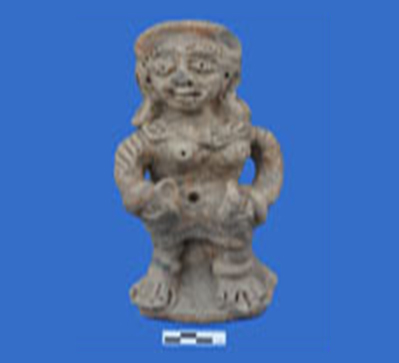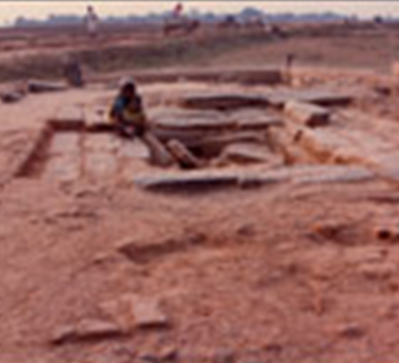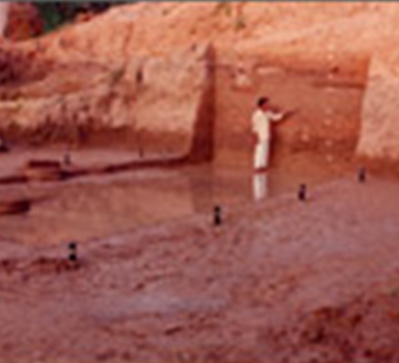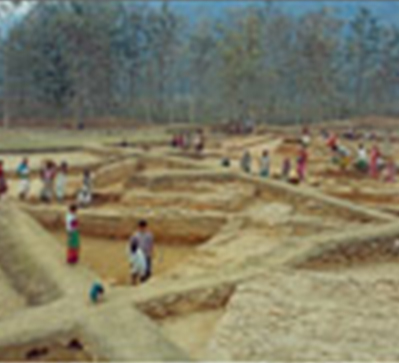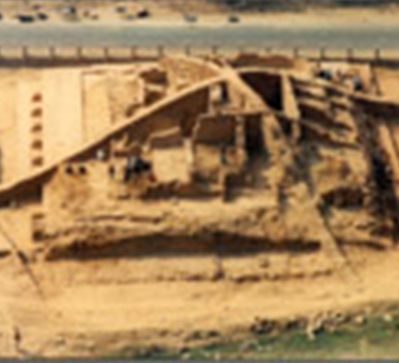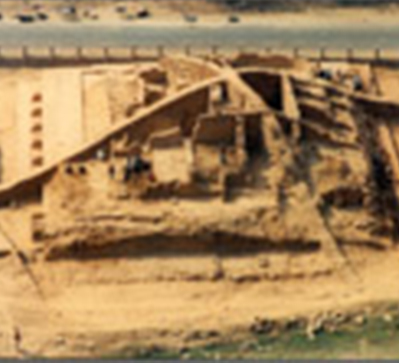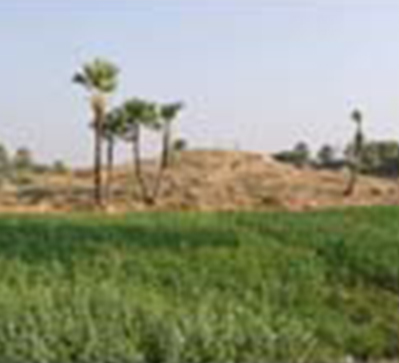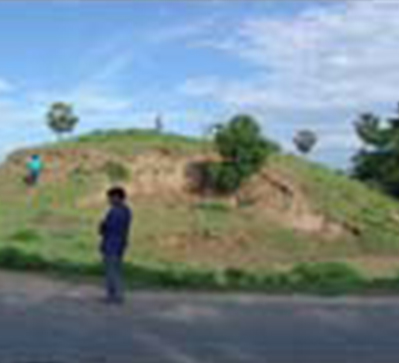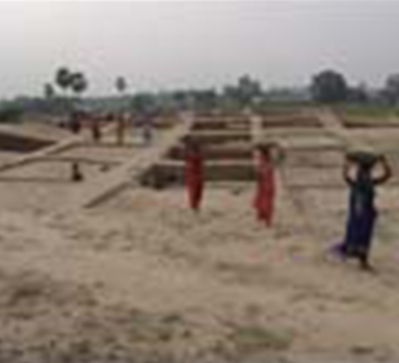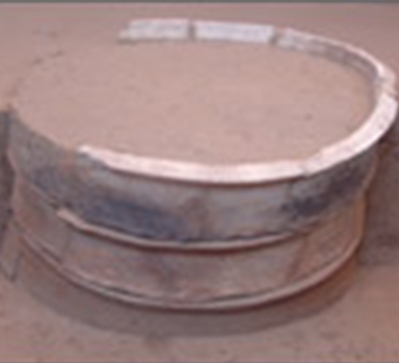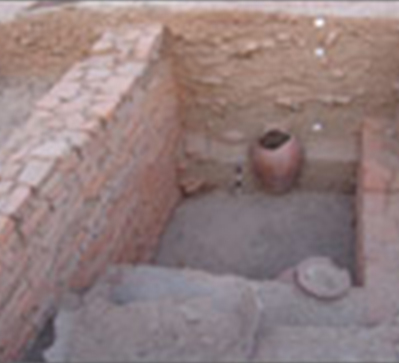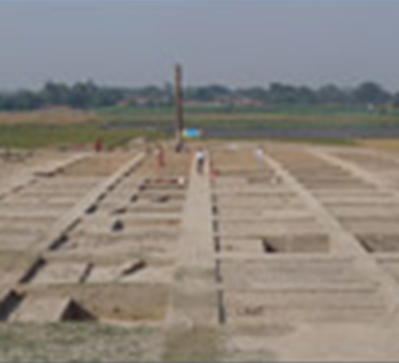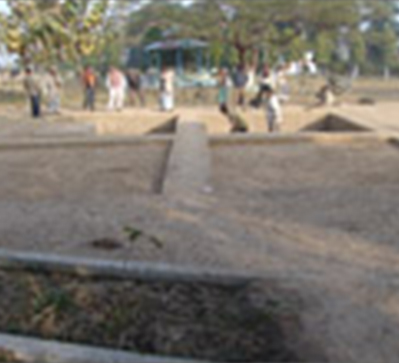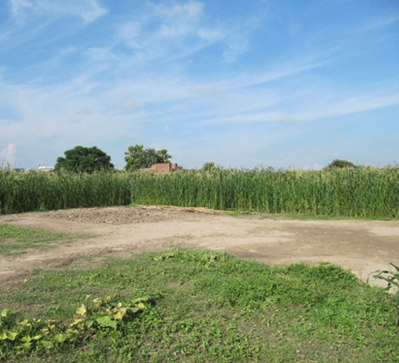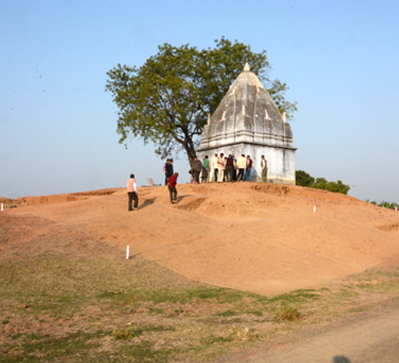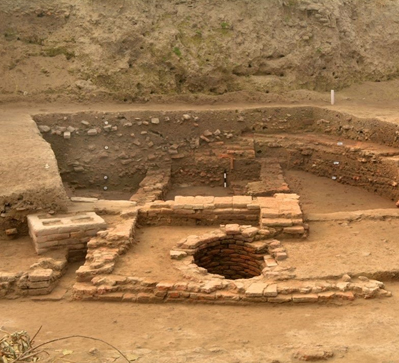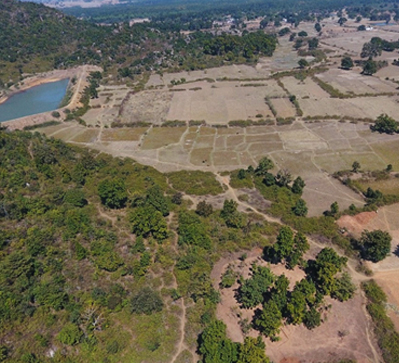Begampur
| Location | Lat 25° 25’20“E, Long 81° 54’ 31”E |
| District | Nalanda |
| State | Bihar |
| Excavation Years | 2007-08 |
| Director of Excavations | P.K. Mishra |
| Assisted by | N.G.Nikoshey, S.Nayan, J.K.Tiwari, A.Arif & Neetesh Saxena. |
Begampur village is situated 1.4 km. north from the ruins of Nalanda Mahavihara. There is a huge mound towards south of the village Begampur. Presently the area of mound is approximately 300 x 300 mts. and height is about 5 mts. from surrounding place.
On the basis of ceramic industries antiquities and other material culture recovered from the excavation, the following chronology is suggested.
| Period I | Pre-Gupta Period. |
| Period II | Gupta Period. |
| Period III | Late Medieval Period. |
Structural activities are found in form of brick walls, mud floor with remains of hearth. Mud mortar is used as binding material in all structures. Few walls are forming a rectangular shaped structures divided into three cells.
The ceramics recovered are remarkable. These can be classified into Red Ware, dull red Ware, Red Slipped Ware, dull red slipped ware. A few of Black slipped ware and Grey ware potsherds have also been discovered. The shapes and types are very limited and mainly of utilitarian types of pots such as bowls both deep profiles and shallow bowls having mainly corrugations on the body and knife-edged rim having thick foot-ring or disc base. Other shapes are basin, channel basins, spout-pots, vases and storage jars are found mainly in dull red ware of coarse gritty fabric, prepared by clay mixed with sand which is very coarse varities. These pots are not well oxidized as a result it produce very dull sound when struck each other. Majority of the pots and sherds are wheel turned, but big storage jars, vases, Handi and water vessels are partly wheel turned and partly handmade. Specimens of decorated pots by increasing, stamping, notching and appliqué methods of decoration also found in some of the pots and sherds discovered at Begampur excavation.
The important antiquities unearthed at the site are terracotta gamesman, beads, birds, human and animal figurines, terracotta plaque, stopper, armlet, sling-balls, hopscotches, rattle handle, iron ring and nails, terracotta mould of horse, moulds and sealing. One of the most important antiquities is a fragment of sealing which shows a deer and inscriptions in Brahmi script.






